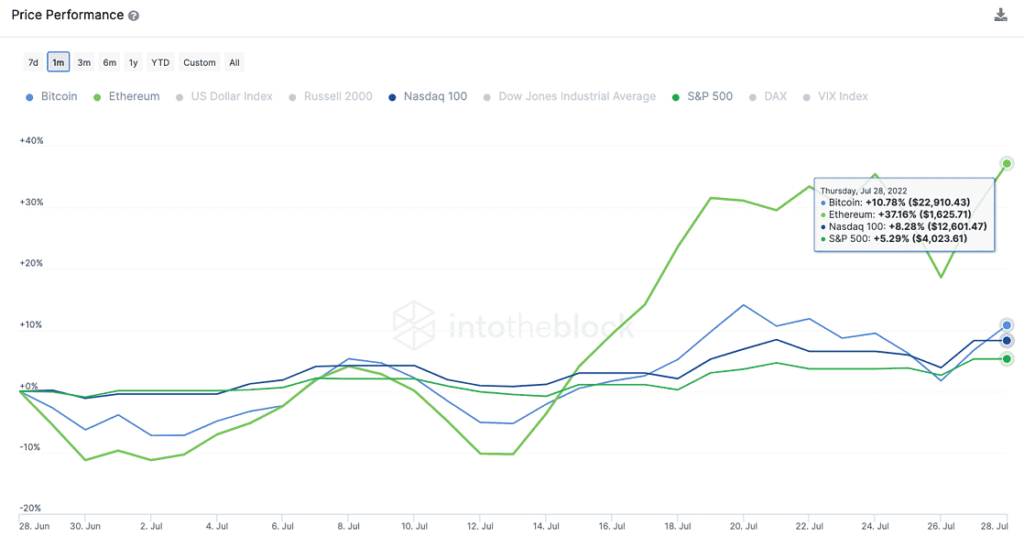The Federal Reserve increased the interest rate by a further 0.75% and the crypto markets responded bizarrely. The U.S. interest rates are back to pre-pandemic levels as the battle against inflation rages on. The crypto market has thus rallied in response to the rate hike as trader sentiment shocks market skeptics.
Only surprises here
Griffin Ardern, a trader at Blofin, is one who believed that the market is expected to tumble in light of the news.
“Considering that the overall risk level of the crypto market has not returned to a reasonable level, it is very likely that the BTC price will drop by more than 10% after the Fed rate hike,” he said.
However, the crypto market reacted in an opposing manner as BTC price briefly jumped upwards of $24k. ETH also saw respite after price rebounded over $1,750 before consolidating just above $1,700. Lucas Outumuru, Head of Research at IntoTheBlock, compiled a briefing in the aftermath of the Fed decision. Both Bitcoin [BTC] and Ethereum [ETH] fees dropped by over a third during the week with respect to last week’s values. Furthermore, around $200 million worth of BTC and ETH holdings were taken off centralized exchanges.
Correlations between Bitcoin and the Nasdaq 100’s prices have reached their highest in 90 days. Ergo, it is fairly evident that the market “bought the news”, thus improving the crypto’s case as a high-profile asset.
In another major development it was found that 60% of BTC (or 12.69 million BTC) belongs to long term investors. These addresses have increased holdings by 2.7 million in the past year or so. The trend has only increased during the dipping prices in 2022 as Bitcoin continued to shed value. Historically, long term accumulation in crypto has aligned with crypto markets. This further cements the “HODL” mentality which will eventually decide price floors for Bitcoin.
What does this mean in the long run?
The market continues to remain correlated to the current macro conditions “creating its own merits for growth”. These have to do both with investor accumulation and broader fundamental shifts taking place in the underlying technology. However, this cannot be considered an end to the bear market but a period of respite or relief so to say.




